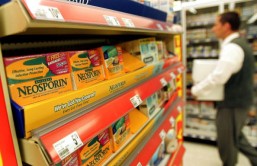Researcher found coral could aid in medical grafting if it was refined to more-closely resemble natural bone.
"Our methods have considerably improved the outcome of bone grafts by using the partial conversion technique, in which the biodegradable composition from natural coral is reserved. It works in a very similar way to commercially available [coralline hydroxyapatite] CHA for conductive bone regeneration, but the better biodegradation properties are compatible with the host tissue's natural bone turnover process," Zhidao Xia of Swansea University, The corresponding author of the research, said in an Institute of Physics news release.
The team partially converted calcium carbonate in the coral's exoskeleton into CHA. The new material, dubbed coralline hydroxyapatite/calcium carbonate (CHACC), was found to significantly improve the outcome of bone grafts in 16 patients. Medical professionals have been using CHA in bone grafts for years, but its uses were limited because it was not "fully biodegradable."
"When biomaterials do not biodegrade and remain in skeletal tissue, they may continuously cause problems in the host. In extreme conditions, it is possible that the different mechanical properties of the artificial bone graft may cause a re-fracture or become a source for bacterium growth in infection," Xia said.
The team hopes CHACC will be used as a safer alternative to the autograft (using bone from another part of the body to regrow healthy bone in the affected area). The autograft has been known to cause "discomfort, pain and long-term impairment in the area that the bone is taken from."
CHACC has a similar porous structure to CHA, but had better biodegrading properties, which helps the bone heal.
The team tested the material on mice, and saw visible bone formation. Sixteen human patients (with a variety of bone issues) were treated with CHACC and showed bone healing within four months; most of the CHACC had degraded between 18 and 24 months.
The team admitted further studies would be necessary in order to confirm the method was more efficient than traditional autografting.
"Although our study has provided promising results, the CHACC material does not contain a bone organic matrix, living cells and the ability to induce, rather than conduct, new bone formation. Therefore, our future work is to combine controlled growth factor delivery and stem cell technology in order to develop an even better solution for bone graft materials." Xia said.








